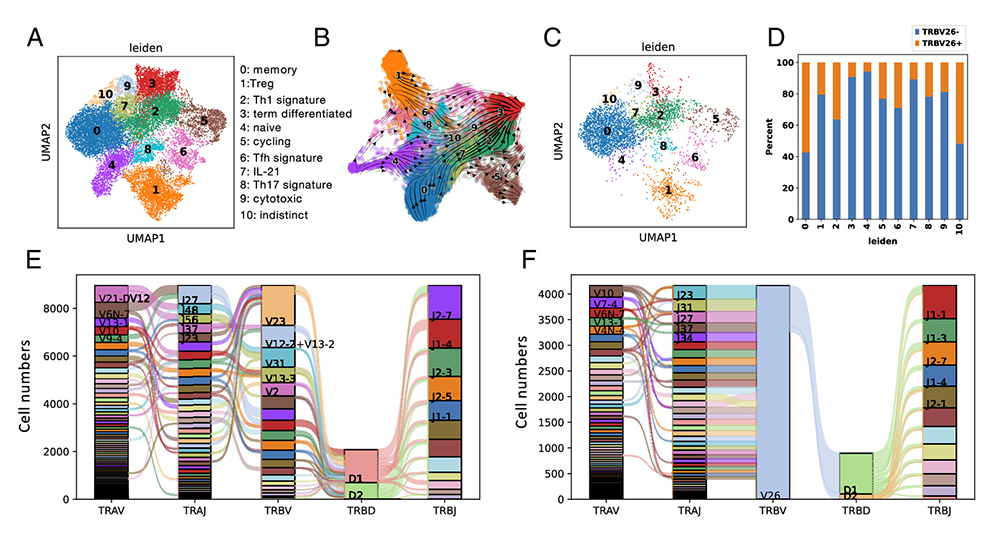
Type 1 diabetes susceptibility and resistance may involve an unlikely player: retroviruses that became part of our genomes millions of years ago.
Mammalian genomes are only partially mammalian. It’s a strange statement, but many sequences integrated within the genomes are derived from a type of virus known as retroviruses. These viral codes, known as endogenous retroviruses (ERVs), are present in a wide range of mammals and other vertebrates. In fact, they comprise as much as 8% of human genomes and have co-evolved, first with our ancient ancestors then with us, for 100 million years. And while the co-evolution has led to largely neutral immune interactions with the retroviral sequence products, research has suggested the persisting potential for biological impact, including the production of proteins known as superantigens that can modulate immune functions. They may also affect the onset of Type 1 diabetes (T1D).
While the exact role human endogenous retroviruses (HERVs) may play remains a matter of debate, two types of HERV have been reported to be abnormally expressed in some human T1D patients. But it’s a complex situation as more than 50 genetic linkages with T1D have been identified. Researchers therefore use mice, in particular a strain known as non-obese diabetic (NOD), as a model for T1D and to study susceptibility and onset. Studies analyzing progeny derived from matings of NOD mice with other strains have provided insights into the long-standing mystery of why T1D can develop in children with no prior disease history on either parental side. These studies found that normally T1D–resistant mice can carry genes with a potential to strongly contribute to T1D, but only in the presence of other genomic factors derived from the NOD strain. Work investigating the basis of a T1D susceptibility gene present in an overall T1D-resistant strain found this is in part due to the absence of a specific endogenous mouse retrovirus, mammary tumor virus 3 (Mtv3), that, when present, can actually contribute to disease protection.
The work is described in a paper published in Proceedings of the National Academy of Sciences, “Deletion of Vb3+CD4+ T cells by endogenous mouse mammary tumor virus 3 prevents type 1 diabetes induction by autoreactive CD8+ T cells,” which provides further evidence of a potential viral influence in T1D and other immune diseases. The paper’s senior author, John Driver, Ph.D., is an associate professor of animal sciences at the University of Missouri, but the story began years ago in the laboratory of co-author and Jackson Laboratory (JAX) Professor David Serreze, Ph.D. Driver, now an infectious disease researcher working with pigs as a model (pigs are able to catch and transmit the flu much like humans, which mice cannot), first became interested in immune response as a postdoctoral associate in Serreze’s laboratory studying T1D in the NOD mouse model. It was his work and resource development while at JAX that launched the project detailed in the paper.
Viral influence
C57BL6/J (B6) mice are typically relatively resistant to T1D, but the research team led by Driver engineered them to carry NOD major histocompatibility complex (MHC) genes, the genomic location most important for T1D risk. These MHC-engineered B6 mice normally remain T1D resistant. However, when they were intercrossed with NOD mice, some of the resulting offspring were surprisingly susceptible to T1D development in a manner dependent upon a B6 derived genomic region. Further analysis identified a location on the mouse genome, called the insulin-dependent diabetes locus 32 (Idd32), highly associated with B6-derived T1D susceptibility. But Idd32 is quite large—about eight million base pairs in length—and contains more than 270 genes, and how it conferred the T1D susceptibility association remained unknown.
For the current paper, the researchers enhanced their gene-mapping work with a CRISPR/Cas9 gene-targeting strategy to reveal that a mouse ERV, Mtv3, underlies Idd32’s T1D effects. They also investigated its mechanism of action, involving the complex interplay between two classes of immune cells, helper CD4+ T cells and cytotoxic (cell-killing) CD8+ T cells, that are essential for T1D development in NOD mice. A subset of T cells called Vb3+CD4+ T cells are needed to trigger the activation of the CD8+ T cells that attack and kill pancreatic beta cells, the cause of T1D. When the Mtv3 superantigen is absent in the B6 strain, it allows enhanced development of precursors to Vb3+ T cells and aggressive T1D onset.
The work underscores the importance of considering the impact of endogenous viruses in mice on research into human immune responses. It also suggests the need for continued inquiry into HERV contributions to autoimmune disorders, given that HERVs account for a significant portion of the human genomes and their already established association with T1D and other disorders.